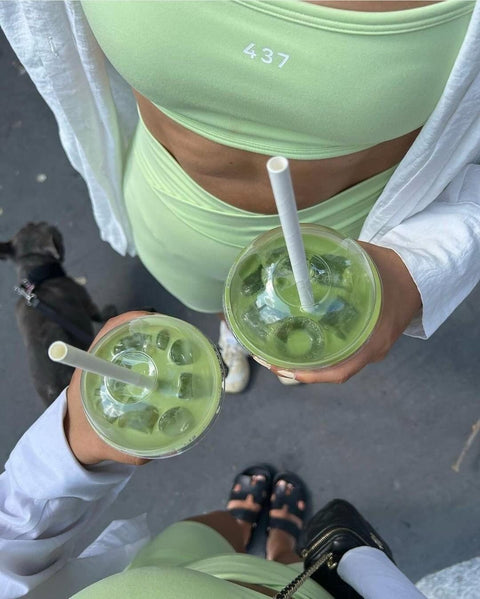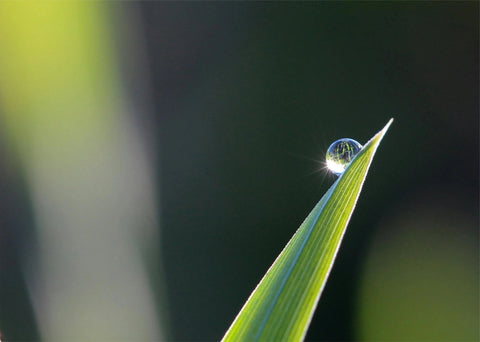
Why the Green Glow Has Everyone’s Attention
Walk into any wellness café or scroll through your feed, and you’ll find a parade of green drinks, each promising to detox, energize, and restore. But what happens when chlorophyll water enters the picture? It’s clear, crisp, and unassuming, yet hailed by many as a quiet revolution in daily wellness.
This comparison isn’t about pitting one drink against another for trend’s sake; it’s about understanding what your body needs and what sustains your health over time.
The Origin Stories: Pressed vs. Infused
Green juice has long been the poster child of wellness. Cold-pressed from leafy greens, fruits, and roots, it was born from the juicing movement that promised a reset for the gut, skin, and energy levels. For many, it offered a fast track to nutrients in liquid form.
Chlorophyll water, on the other hand, stems from plant science. It isolates chlorophyll, the green pigment vital for photosynthesis, and brings it into your hydration routine. A compound once confined to biology textbooks now sits neatly in your bottle, offering benefits that go beyond basic hydration.
This shift isn’t just about preference. It’s a sign of a more profound shift in the way we think about nutrition.
The Science of Detox: Gentle Daily vs. Occasional Overhaul
Green juice offers a nutrient-dense blend that can support the liver, boost antioxidant activity, and facilitate short-term detoxification when consumed in large quantities or during juice fasts. But it’s not without trade-offs. Juices often contain high natural sugar levels, sometimes exceeding 20g per bottle, which can spike insulin and counteract long-term metabolic goals.
Chlorophyll water approaches detox differently. According to a 2021 study in Frontiers in Physiology, chlorophyllin (a semi-synthetic form of chlorophyll) was shown to assist the liver in clearing toxins and improving oxidative stress markers. Its role is subtler: rather than forcing a reset, it supports the body's natural elimination systems daily.
In essence, green juice may feel like a reset button. Chlorophyll water acts more like a steady tune-up.
Digestion & Absorption: Heavy Nutrients vs. Functional Hydration
There’s no question that green juice is nutrient-rich. It delivers vitamins, minerals, and enzymes, but in a format that can often be hard on sensitive stomachs. For those prone to bloating or IBS-like symptoms, the fiber-free, high-fructose nature of green juices can sometimes do more harm than good.
Chlorophyll water, meanwhile, brings a lighter touch. Research published by the Journal of Food Science & Technology notes that chlorophyll may help improve gut microbiota and reduce gastrointestinal inflammation. Anecdotally, many people report improved breath, reduced bloating, and increased regularity after regular use.
It’s not a replacement for a balanced diet, but it can enhance your hydration strategy in a way that’s easier on the gut.
Energy & Mental Clarity: Sugar Rush vs. Oxygen Boost
Here’s something less discussed in the green drink debate: energy doesn’t just come from calories. It also stems from oxygenation, circulation, and the efficiency with which your body transports nutrients.
Green juice, with its natural sugars and vitamin B content, can provide a quick energy boost. But that energy may dip just as quickly, especially when consumed on an empty stomach.
Chlorophyll water’s energy profile is more sustained. Some early studies suggest that chlorophyll may improve red blood cell count or mimic hemoglobin’s oxygen-carrying role, potentially leading to better oxygen delivery and more consistent mental clarity. While research is ongoing, this aligns with many users’ experiences: more precise focus, fewer slumps, and a calm kind of energy.
The Skin Deep Test: Topical Glow vs. Internal Radiance
Skincare and detox often go hand in hand, and both green drinks have a role here.
Green juice contains antioxidants such as vitamin C and beta-carotene, which support collagen production and help reduce oxidative stress. But again, benefits depend heavily on the juice composition.
Chlorophyll has unique skin-friendly properties. A 2016 clinical trial published in Clinical Cosmetics and Investigational Dermatology found that topical chlorophyllin helped reduce acne and large pores. Internally, it may work by reducing inflammation and aiding wound healing, translating to clearer skin over time when combined with hydration.
It’s not an instant glow-up, but it’s consistent support from the inside out.
Convenience & Commitment: Fridge Life vs. Shelf Life
For many wellness habits, sustainability comes down to one thing: how easy is it to repeat?
Green juices, despite their benefits, are high-maintenance. They require refrigeration, have short shelf lives, and are best consumed fresh. That makes them less practical for on-the-go lifestyles or daily use.
Chlorophyll water flips that. It’s portable, stable, and fits into your day without prep. Whether you're traveling, working, or recovering from a workout, it goes where you go.
In a Sip: Which One Works for You?
-
Green juice is best when you need a nutritional boost or want a rich mix of vitamins in one shot.
-
Chlorophyll water supports daily detox, hydration, energy, and digestion, without the heaviness or sugar.
Both have their place. However, when it comes to consistency, simplicity, and ease in real-world applications, chlorophyll water emerges as the smarter everyday habit.
If you’re looking for clean hydration that works with your body, not just trends, Cquater is your match. Plant-powered. No sugar. No fillers. Just clarity in a bottle.



